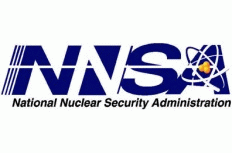NUCLEAR TESTING CONTINUES DESPITE U.S. PROMISES, WORLD
YAWNS
By William Boardman Email address removed
When the United States conducted a nuclear weapons test in Nevada in early December, there was little public fanfare, less national media coverage, and only a smattering of international protest suggesting that the test violated the spirit of the 1996 Comprehensive Nuclear-Test-Ban Treaty. The Treaty bans "any nuclear weapon test explosion or any other nuclear explosion."
President Clinton signed the treaty in 1996, but Congress has consistently refused to ratify it, and explicitly voted it down in 1999. In April 2009, in Prague, President Obama promised serious effort on reducing the nuclear danger:
To
achieve a global ban on nuclear testing, my administration will immediately and
aggressively pursue U.S. ratification of the Comprehensive Test Ban Treaty.
(Applause.) After more than five decades of talks, it is time for the testing
of nuclear weapons to finally be banned.
And
to cut off the building blocks needed for a bomb, the United States will seek a
new treaty that verifiably ends the production of fissile materials intended
for use in state nuclear weapons. If we are serious about stopping the spread
of these weapons, then we should put an end to the dedicated production of
weapons-grade materials that create them. That's the first step.
On December 5, the National Nuclear Security Administration (NNSA), part of the U.S. Dept. of Energy, carried out a "subcritical experiment" code-named Pollux that used non-nuclear explosives to test the ongoing "safety and effectiveness of the nation's nuclear weapons," according to the agency.
Subcritical
Tests Aren't Nuclear Explosions
(Note: You can view every article as one long page if you sign up as an Advocate Member, or higher).






